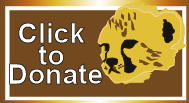For me, coming to CCF was not only about fulfilling a long
time dream of working with cheetahs but about conducting research as well. I am
a PhD candidate at the University of Maryland College Park (USA) and I work
with the Smithsonian Conservation Biology Institute to investigate how stress
is related to disease in captive cheetah populations. AA amyloidosis is a
disease that is highly prevalent among the captive cheetah population in North
America, but appears to be virtually nonexistent in wild cheetahs and I believe
that this is due to the stress that being held in captivity imposes; this is the
focus of my dissertation research. CCF and the Smithsonian have had a long and
strong history of collaboration, so I took this opportunity to compare the
captive cheetahs in the US to captive and wild cheetahs in Namibia. In order to
measure stress in a cheetah, the hormone cortisol is commonly used. Hormones
can most easily be measured in the blood, but collecting blood samples from a
cheetah is both invasive and stressful, so instead, I use fecal samples. The
amount of cortisol in feces varies from day-to-day, so I collect many samples
over a long period of time to calculate an average, or baseline, for each
individual. Once we have this information we can begin to investigate if stress
may be directly related to AA amyloidosis.
A large amount of my time at CCF has been working directly
with the husbandry team to prepare meat, feed cheetahs, and collect fecal
samples daily for my study. Cheetahs at CCF are housed in groups, which makes
the process a bit more complicated, because when we find a fecal sample in an
enclosure we do not know which cheetah it belongs to. So what is the solution?
I add different non-digestible markers, such as uncooked lentils, corn, or rice
to each individual’s food. These markers will pass through the cheetah’s
digestive tract and into their feces. This way, when I collect a fecal sample,
I can look to see which marker is inside and instantly know which cheetah the
fecal sample came from. Using this method, I have been able to collect samples
from 34 of the resident cheetahs at CCF whom will be included in my study.
In addition to this work, I have also spent a lot of time
working in the Genetic Conservation Laboratory here at CCF because I am also
interested to know if there are genetic differences between cheetahs that predispose
them to getting AA amyloidosis, particularly when stressed.
I feel incredibly lucky to have been able to spend the last
two months here at CCF and feel incredibly sad that my time here has just about
come to an end. I’ve been so fortunate to get to know most of CCF’s resident
cheetahs and CCF’s staff has been fantastic, unwavering in their efforts to
help me with my research exceeding my original expectations. I look forward to
the day I will return to CCF again, because it is not a question of if, it is a question of when.
Ashley Franklin, PhD Student Research Intern


















